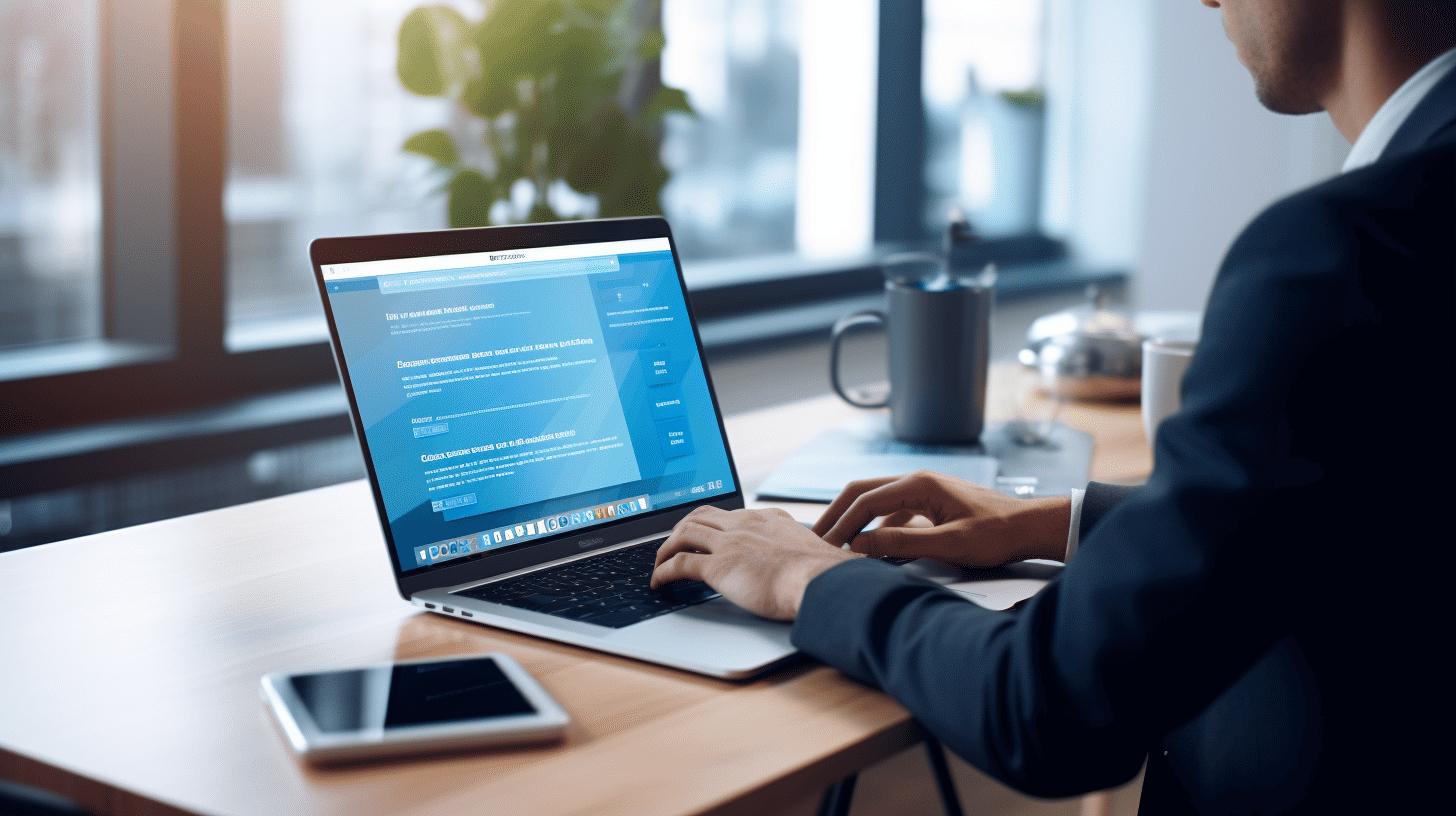在当今的数字时代,拥有一个专业的网站对于企业、组织和个人都至关重要。在创建专业网站方面,WordPress 仍然是许多人的首选。凭借其用户友好的界面、丰富的插件库和可自定义的主题,WordPress 提供了一个强大的平台来打造令人惊叹的在线形象。
然而,创建和维护专业的 WordPress 网站不仅仅需要选择主题和添加内容。它还涉及关注最小的细节、确保无缝的用户体验以及实施最佳实践以最大限度地发挥您网站的潜力。
在本文中,我们将探讨创建和维护专业 WordPress 网站的关键最佳实践。我们将深入探讨可访问性和用户友好导航的重要性,讨论响应式设计和性能优化的重要性,并重点介绍最新的网站设计趋势,以保持您的网站具有视觉吸引力和最新性。此外,我们将涉及网站安全性和维护,并提供构建低维护 WordPress 网站的见解。
因此,无论您是希望建立在线形象的企业主、展示作品集的自由职业者,还是分享专业知识的博主,本文都将指导您完成创建专业的 WordPress 网站的过程,让您脱颖而出。
让我们开始吧!🚀
强调可访问性和用户友好型导航
2023 年,WordPress 网站设计将更加注重可访问性和用户友好的导航。随着越来越多的企业和个人涉足网络领域,确保所有用户(无论其能力或残疾)都可以访问网站变得至关重要。此外,用户友好的导航对于提供无缝且愉快的浏览体验至关重要。
无障碍设施
无障碍是指让网站可供残障人士使用的做法。这包括但不限于视力障碍、听力障碍、运动障碍和认知障碍人士。通过实施无障碍措施,网站所有者可以确保其内容易于感知、操作和理解。
以下是设计 WordPress 网站时需要考虑的一些可访问性关键方面:
- 替代文本:为图像提供替代文本,为音频和视频内容提供文字记录,可以让有视觉或听觉障碍的用户理解所呈现的信息。
- 键盘导航:对于无法使用鼠标或触摸屏的用户来说,确保所有网站功能都可以通过键盘访问和控制至关重要。
- 颜色对比:在文本和背景之间使用足够的颜色对比度,可以让有视觉障碍的用户更容易阅读和理解内容。
- 语义标记:使用适当的 HTML 元素和结构有助于辅助技术准确地解释并向用户呈现网站内容。
通过在 WordPress 网站设计过程中优先考虑可访问性,企业不仅可以增强更广泛用户的用户体验,还可以遵守法律要求,例如《Web 内容可访问性指南》(WCAG)。
有关可访问性在网页设计中的重要性的更多信息,请访问 强调可访问性.
用户友好导航
用户友好型导航旨在为网站访问者创造无缝且直观的浏览体验。当用户可以轻松找到他们想要的内容并毫无困惑或沮丧地浏览网站时,他们更有可能保持互动并转化为客户或常客。
以下是在 WordPress 网站上实现用户友好导航的一些策略:
- 清晰一致的菜单结构:井然有序且合乎逻辑的菜单结构可确保用户轻松浏览网站的不同部分。每个菜单项都应有一个清晰且有意义的标签来表示其指向的内容。
- 面包屑:面包屑为用户提供了一种简单方法来追踪他们在网站层次结构中的位置,并允许他们返回到以前访问过的页面。
- 搜索功能:在网站上显著的位置设置搜索栏可以让用户快速找到特定内容,尤其是当他们清楚地知道自己在寻找什么的时候。
- 响应式设计:随着智能手机和平板电脑的浏览使用越来越多,确保您的 WordPress 网站适合移动设备并在不同设备之间提供无缝体验至关重要。
通过注重用户友好的导航,企业可以降低跳出率、增加参与度并最终提高转化率。设计精良且导航直观的 WordPress 网站会给人留下积极的印象,并鼓励访客进一步探索。
总之,在 2023 年,企业在设计 WordPress 网站时应优先考虑可访问性和用户友好的导航。通过让所有用户都可以访问网站并提供直观的导航,企业可以创造包容性的网络体验并增强用户参与度。因此,花点时间将这些关键元素集成到您的 WordPress 网站设计中,以实现真正以用户为中心的在线形象。
WordPress 网站设计的关键最佳实践
网页设计领域在不断发展,有如此多的选择和趋势需要考虑,确保您的 WordPress 网站能够提供最佳的用户体验可能令人不知所措。为了帮助您驾驭不断变化的环境,我们收集了一些 WordPress 网站设计的关键最佳实践。在本文中,我们将探讨网站设计的两个基本方面:响应式设计和性能优化。
响应式设计
在当今的移动设备驱动的世界里,拥有一个响应式网站不再是一种选择,而是一种必需品。随着越来越多的用户通过智能手机和平板电脑访问网站,确保您的 WordPress 网站针对不同的屏幕尺寸和设备进行优化至关重要。以下是响应式设计时需要考虑的一些最佳做法:
- 移动优先方法:在设计网站时,请充分考虑移动用户的需求。这种方法可确保您的网站在较小的屏幕上看起来很棒,并且能够无缝运行,然后您可以逐步增强大屏幕的设计。
- 灵活的布局:使用 CSS 媒体查询创建流畅灵活的布局,以适应不同的屏幕尺寸。这将允许您的网站相应地调整其元素的大小和位置,从而提供跨设备的无缝用户体验。
- 优化图像:针对不同的屏幕分辨率优化图片。使用自适应图片技术,例如
源码属性,根据用户的设备提供适当大小的图像。 - 测试与优化:在各种设备和屏幕尺寸上测试您的网站,确保其外观和功能符合预期。监控性能指标(例如加载时间和页面速度),并相应地优化您的设计。
性能优化
网站性能在用户体验和搜索引擎排名中起着至关重要的作用。加载缓慢的网站会让用户感到沮丧,并让他们离开您的网站。以下是优化 WordPress 网站性能的一些最佳做法:
- 缓存:实施缓存机制,例如浏览器缓存和服务器端缓存,以存储静态文件并减少服务器负载。这可以显著缩短回访者的页面加载时间。
- 最小化:通过删除不必要的字符、空格和注释来减小 CSS 和 JavaScript 文件的大小。压缩可以帮助减小文件大小,从而缩短加载时间。
- 图像优化:压缩和优化图像而不牺牲质量。使用图像优化插件或在线工具来减小文件大小并缩短加载时间。
- 内容分发网络 (CDN):利用 CDN 将您的网站内容分发到世界各地的多个服务器上。CDN 有助于从最靠近用户的服务器传送您的内容,从而减少延迟并缩短加载时间。
请记住,实施响应式设计和优化网站性能是一个持续的过程。定期审查并根据新兴趋势和技术更新您的设计,以保持领先地位。通过遵循这些关键的最佳实践,您可以确保您的 WordPress 网站是一个用户友好、高性能的平台,给访问者留下积极的印象。
🌐 了解有关 WordPress 网站设计的最佳实践的更多信息。
创建专业的WordPress网站
您准备好将您的网站提升到一个新的水平了吗?创建专业的 WordPress 网站是建立强大的在线形象并展示您的品牌或业务的绝佳方式。凭借其用户友好的界面和广泛的自定义选项,WordPress 是初学者和经验丰富的 Web 开发人员的首选平台。
在创建专业的 WordPress 网站时,需要考虑几个基本步骤。在本文中,我们将探讨一些让您的网站与众不同的关键方面。让我们开始吧!
选择合适的主题
创建专业的 WordPress 网站的第一步是选择合适的主题。主题决定了网站的整体外观和感觉,因此选择符合您的品牌形象和目标的主题非常重要。以下是选择主题时需要牢记的一些提示:
- 选择响应式主题:随着越来越多的人通过移动设备访问网站,选择能够无缝适应不同屏幕尺寸的响应式主题至关重要。
- 考虑您的行业:寻找专门为您的行业设计的主题。无论您是摄影师、博主还是小企业主,都有无数主题可以满足您的需求。
- 检查自定义选项:确保您选择的主题提供足够的自定义选项,使您的网站独一无二。可自定义的标题、配色方案和字体样式对于创建专业且统一的外观大有帮助。
自定义视觉元素
选择主题后,就可以自定义网站的视觉元素了。关注视觉细节可以显著改变访问者对网站的看法。以下是一些需要考虑的元素:
- 标志和品牌:在整个网站中融入您的标志和品牌颜色,以建立一致且可识别的品牌标识。
- 高质量图片:使用与您的内容相关的高质量图片来吸引访客的注意力。请记住,一张图片胜过千言万语!
- 字体:选择易于阅读且符合您品牌个性的字体。保持字体大小和样式的一致性,以获得精致的外观。
制作引人入胜的内容
创建引人入胜的内容是吸引受众并鼓励他们进一步探索您的网站的关键。以下是一些帮助您制作引人注目的内容的提示:
- 定义您的目标受众:确定您的目标受众是谁,并定制您的内容以吸引他们的兴趣和需求。
- 使用引人入胜的标题:使用引人注目且信息丰富的标题吸引观众的注意力。不要害怕发挥创意!
- 创建有价值且信息丰富的内容:提供与您的受众相关的见解、提示和解决方案。这将建立信任并将您的网站打造为可靠的信息来源。
简洁实用的 UI 设计
除了选择主题和自定义视觉元素外,简洁实用的 UI 设计也是必不可少的。设计精良的用户界面可以大大提升用户体验,让您的网站更容易被搜索引擎发现。以下是 UI 设计为何如此重要的原因:
- 布局简洁:使用简洁有序的布局,让访客可以轻松浏览您的网站。避免杂乱,并优先考虑最重要的内容。
- 充足的空白:空白在提供视觉空间和提高可读性方面起着至关重要的作用。它有助于突出关键元素并使您的网站具有视觉吸引力。
通过遵循这些步骤并关注这些重要方面,您将能够创建一个在竞争中脱颖而出的专业 WordPress 网站。
现在,您已经有了创建专业 WordPress 网站的清晰路线图,是时候撸起袖子开始构建了!查看这篇文章 创建 WordPress 网站 寻求进一步的启发和指导。祝你好运!😊
2023 年网站设计趋势
随着技术的不断发展,网站设计趋势也在不断变化并适应最新的创新。展望 2023 年,企业和网站所有者必须保持领先地位并保持网站的新鲜感和吸引力。在本文中,我们将探讨一些预计将在 2023 年占据主导地位的令人兴奋的网站设计趋势。
色彩鲜艳🔆
2023 年最大的网站设计趋势之一是使用明亮的色彩。设计师越来越多地采用鲜艳醒目的配色方案来吸引用户的注意力并创造令人难忘的浏览体验。柔和单调的配色方案时代已经一去不复返——2023 年的重点是拥抱大胆的色调并彰显个性。
以下是在网站设计中实现明亮色彩的几种方法:
- 充满活力的背景: 使用大胆而鲜艳的颜色作为背景可以立即提升网站的整体外观和感觉。
- 彩色字体: 尝试使用独特且对比鲜明的颜色作为标题和文本可以吸引人们对关键信息的注意并使其更容易记住。
- 颜色叠加: 在图像上应用半透明彩色覆盖可以增加网站设计的深度和视觉趣味。
请记住,明亮色彩的使用应始终保持平衡,并与您的品牌形象保持一致。策略性地结合它们以突出重要元素并唤起受众所需的情感。
实现人工智能🤖
人工智能 (AI) 已经改变了各行各业,网站设计也不例外。预计到 2023 年,将 AI 融入网站设计将变得更加普遍。人工智能功能可以增强用户体验并简化流程,使网站更具互动性和效率。
以下是在网站设计中实现AI的几种方法:
- 个性化内容: 使用人工智能算法,网站可以分析用户行为并根据每个访问者的喜好和兴趣提供个性化内容。
- 聊天机器人: 人工智能聊天机器人提供实时客户支持、回答常见问题并协助用户浏览网站。
- 语音接口: 由人工智能驱动的语音控制界面可以使网站更易于访问和用户友好,允许用户使用语音命令与网站进行交互。
通过采用人工智能技术,网站可以提供更好的用户体验,提高客户参与度并保持竞争优势。
使用聊天机器人💬
2023 年网站设计领域的另一个新兴趋势是使用聊天机器人。聊天机器人是模拟人类对话并立即响应用户查询的计算机程序。对于希望提供快速高效客户支持的企业来说,它们越来越受欢迎。
以下是在您的网站上使用聊天机器人的一些好处:
- 24/7 全天候服务: 聊天机器人可以全天候处理客户询问,确保访客总能及时得到帮助。
- 缩短响应时间: 通过自动响应常见查询,聊天机器人可以提供即时答案并节省用户和企业的时间。
- 经济高效的客户支持: 实施聊天机器人可以减少对大型客户支持团队的需求,从而为企业节省成本。
聊天机器人还可以进行定制以匹配您的品牌声音,从而使对话更加个性化和吸引用户。
总之,随着我们步入 2023 年,了解最新的网站设计趋势非常重要。融入鲜艳的色彩、实施人工智能和使用聊天机器人只是可以帮助企业创建引人入胜且用户友好的网站的新兴趋势中的一小部分。通过拥抱这些趋势,企业可以增强用户体验、提高参与度并最终实现其网站目标。
要了解有关 2023 年最新网站设计趋势的更多信息,请查看此 资源.
网站安全和维护
介绍:
在当今的数字环境中,确保网站的安全和维护比以往任何时候都更加重要。安全的网站可以赢得访问者的信任,并保护敏感数据免受潜在威胁。此外,定期维护有助于优化网站的性能并确保其顺利运行。在本节中,我们将探讨网站安全和维护的两个关键方面:定期更新和备份以及安全措施。
定期更新:
定期更新 WordPress 核心、主题和插件对于网站安全至关重要。通过使网站软件保持最新,您可以受益于最新的安全补丁、错误修复和功能增强。以下是定期更新至关重要的几个主要原因:
- 安全:更新通常包括安全修复,以解决黑客可能利用的漏洞。通过保持最新状态,您可以最大限度地降低安全漏洞的风险并保护您的网站及其访问者。
- 兼容性:更新可确保您的网站与最新版本的插件、主题和其他组件保持兼容。这可降低兼容性问题发生的可能性,从而避免影响您网站的功能。
- 新功能:更新通常会带来新功能和改进,增强用户体验并允许您利用最新的工具和技术。
请记住,在执行更新之前务必进行备份。这样,如果在更新过程中出现任何问题,您就有了安全保障。
备份和安全措施:
定期备份和有效的安全措施对于维护安全的 WordPress 网站至关重要。以下是它们至关重要的原因:
- 資料保護:备份是数据丢失、意外删除或安全漏洞发生时的安全网。通过定期备份,您可以在需要时轻松将网站恢复到以前的工作状态。
- 减少停机时间:如果发生安全漏洞或网站被入侵,拥有安全备份可以让您快速恢复网站并最大程度地减少停机时间。这对于依赖网站作为主要收入来源或客户互动的企业尤其重要。
- 安全插件:利用安全插件可以通过主动监控和防御潜在威胁来提供额外的保护。这些插件可以帮助检测和阻止可疑活动、保护登录凭据并提供实时安全警报。
通过定期执行维护任务,包括备份、更新和优化网站性能,您可以确保 WordPress 网站的持续安全性和功能。
“成功的网站管理包括定期更新、备份和安全措施,以保护您的网站、访问者和数据。”
有关保护 WordPress 网站安全的更多详细信息,请查看此内容 网站安全和维护 文章。
构建低维护的 WordPress 网站
在当今快节奏的数字世界中,拥有一个低维护的网站对于企业和个人都至关重要。低维护的 WordPress 网站不仅可以节省您的时间和精力,还可以确保您的在线业务顺利高效地运行。那么,如何建立一个只需要最少维护的网站呢?让我们探索一些可以帮助您实现这一目标的关键策略。
选择一个简单的主题
构建低维护 WordPress 网站的第一步是选择一个简单的主题。虽然有成千上万个美观且功能丰富的主题可供选择,但选择更简单的设计可以大大减少持续更新和维护的需求。原因如下:
- 轻量级:简单主题通常很轻量级,这意味着它们的代码行数和功能都较少。这不仅可以提高网站的加载速度,还可以降低未来 WordPress 更新出现兼容性问题的可能性。
- 轻松定制:简单主题通常提供直接的定制选项,让您无需深入研究复杂的编码即可更改网站的外观。这使您能够创建一个视觉上吸引人的网站,而无需不断进行调整。
请记住,视觉效果出色的网站不必太复杂。通过选择简单的主题,您可以为低维护的网站奠定基础,同时仍能吸引访问者的注意力。
谨慎使用插件
插件可以增强 WordPress 网站的功能,但使用过多插件可能会导致日后维护困难。为了保持网站精简且易于管理,谨慎使用插件至关重要。原因如下:
- 兼容性问题:您安装的每个插件都会为您的网站添加额外的代码,从而增加发生冲突和兼容性问题的可能性。随着 WordPress 的发展和核心软件的更新,插件也必须跟上,通常需要定期更新。通过限制插件数量,您可以降低因代码冲突或兼容性过时而出现问题的风险。
- 安全漏洞:某些插件可能存在可被黑客利用的漏洞。您安装的插件越多,恶意攻击的潜在入口点就越多。通过保持插件数量较少,您可以最大限度地降低与网站相关的安全风险。
在安装新插件之前,先问问自己是否真的有必要。在主题功能中寻找替代解决方案,或探索可满足多种用途的轻量级多用途插件。
获取托管主机
选择合适的托管服务提供商是构建低维护 WordPress 网站的关键方面。选择托管托管可以对网站的顺利运行和维护产生重大影响。方法如下:
- 自动更新和备份:托管服务提供商负责处理技术方面的问题,包括自动更新您的 WordPress 核心、主题和插件。他们还会定期进行备份,确保您的网站始终保持最新状态,并且在出现任何不可预见的问题时可以轻松恢复。
- 性能优化:托管服务提供商通常会针对 WordPress 网站提供特定的优化。这些优化可以包括服务器级缓存、内容分发网络 (CDN) 和其他性能增强功能,以确保您的网站快速高效地加载。
- 专家支持:通过托管,您可以获得专门从事 WordPress 的专家团队的支持。无论您遇到技术问题还是对优化网站有疑问,他们的支持都可以为您节省时间和压力。
通过选择托管,您将网站的技术方面委托给专业人士,让您专注于创建内容和扩大您的在线影响力。
通过选择简单的主题、谨慎使用插件和选择托管主机,可以构建低维护的 WordPress 网站。通过实施这些策略,您可以节省时间、精力和潜在的麻烦,确保您的网站长期保持高效和有效。
结论
创建和维护专业的 WordPress 网站需要仔细注意设计、可用性和安全性。通过遵循本文讨论的最佳实践,您可以确保您的网站脱颖而出、吸引用户并提供卓越的体验。
请记住,在当今的数字环境中,优先考虑可访问性和用户友好的导航至关重要。利用响应式设计技术确保您的网站在所有设备上的外观和功能都完美无缺。通过最大限度地缩短加载时间并优化图像和代码来优化性能。
在设计方面,选择与您的品牌相符的合适主题并自定义视觉元素,以创建一个具有凝聚力和视觉吸引力的网站。制作引人入胜的内容以吸引您的受众,并利用简洁实用的 UI 设计原则来增强可用性。
了解 2023 年的最新网站设计趋势,包括使用明亮的色彩、实施人工智能以及利用聊天机器人来增强用户参与度。
不要忘记网站安全和维护。定期更新您的 WordPress 核心、主题和插件,并实施备份和安全措施,以保护您的网站免受潜在威胁。
对于维护成本较低的网站,请选择简单的主题,谨慎使用插件,并考虑投资托管。Managed-WP™ 是一款高级托管 WordPress 云托管平台,可简化您网站的基础架构,提供自由的数字体验,并提供专家全天候问题解决支持。
通过这些最佳实践和正确的工具和资源,您可以创建和维护一个专业的 WordPress 网站,给访问者留下深刻印象、推动转化并帮助您实现在线目标。
立即开始使用 Managed-WP™ 构建您的专业 WordPress 网站。 查看Managed-WP™ 了解有关他们如何简化您的托管体验的更多信息。
常见问题
- 创建专业 WordPress 网站的最佳实践是什么?
创建专业 WordPress 网站的一些最佳实践包括选择简洁现代的主题、使用高质量的图像、组织具有清晰导航的内容、优化网站速度以及实施响应式设计。
- 如何维护专业的 WordPress 网站?
要维护专业的 WordPress 网站,请定期更新 WordPress 核心、主题和插件,定期备份您的网站,监控网站性能,修复断开的链接,优化 SEO,并定期发布新鲜有价值的内容。
- 移动响应能力对于专业的 WordPress 网站来说有多重要?
移动响应能力对于专业的 WordPress 网站至关重要,因为它可以确保您的网站在不同设备上正常显示和运行。随着移动设备的使用越来越多,拥有一个适合移动设备的网站可以提供更好的用户体验并提高 SEO 排名。
- 我应该对我的专业 WordPress 网站采取什么安全措施?
是的,为您的专业 WordPress 网站采取安全措施非常重要。这包括安装安全插件、使用强密码、启用双因素身份验证、定期更新 WordPress、主题和插件以及定期备份您的网站。
- 有哪些推荐的插件可用于维护专业的 WordPress 网站?
一些用于维护专业 WordPress 网站的推荐插件是:iThemes Security、用于备份的 UpdraftPlus、用于缓存和网站速度的 WP Rocket、用于 SEO 优化的 Yoast SEO 和用于网站分析的 MonsterInsights。



















